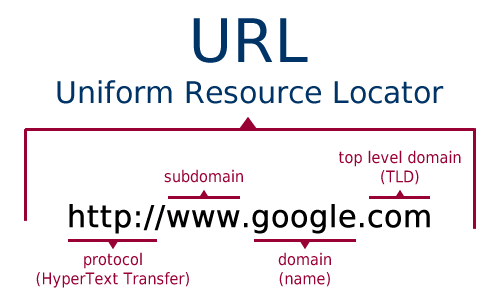Are http:// and www really necessary?
Here’s a question that comes up fairly often from clients and in classes. John Fenger of Fenger Painting writes, “When directing someone to my website (like on a business card), is there any reason WHY you need to put the http:// first? Or can you just put fengerpainting.com? What does www. mean vs the http://? No one seems to know.”
The short answer is, you can just put in fengerpainting.com. Technically, the http:// (or https:// if the site is secured) is required but the browser will add it for you. This part of the address is known as the “protocol” (HTTP stands for Hypertext Transport Protocol) and it defines the communication rules that the web browser and the server use when exchanging web pages. There are other protocols in use on the Internet but HTTP is the one for web pages.
A web page addresses is also known as a URL, which stands for Uniform Resource Locator. URLs have a standard pattern that looks like this (reading from right to left): Top level domain, domain, sub-domain (optional), protocol.

WWW is an optional part of a website’s address, known as a “sub-domain”. Its original use was to indicate that the address leads to a public website. These days, any properly configured website should work with or without the www. Lots of people think that all websites have to include “www” but that’s not the case. In fact, there are ongoing debates about the pros and cons of including it. I usually come down on the side of shorter being better, except in the case of existing sites where the address has already been indexed with the www by search engines.
WWW is kind of an odd duck when used as a sub-domain, because it will lead to the same website whether it is used or not. A more functional use of a sub-domain is as the address to a completely different site within the same domain. For example, if John had a site dedicated to customer support it could be located at support.fengerpainting.com.
As you make your way around the web, it’s helpful to understand the parts of a URL, even though some of them are often hidden from view.
Hope that helps…



Thank you so much. I was struggling to find anything that makes sense and isn’t trying to make me download anything. This really helped
Thank you, this was helpful!!